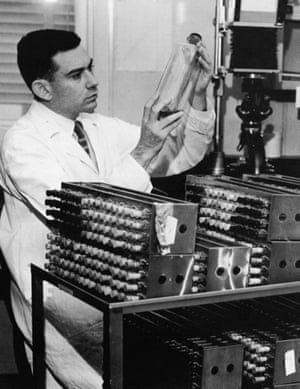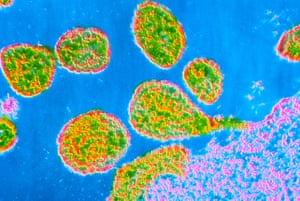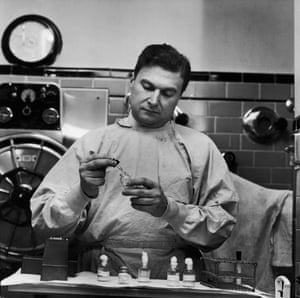You’re dedicated. You’ve been working up a sweat five days a week. You’re determined to shift the weight and tone up. You’ve read the articles and booked the personal trainer. But there’s something you should know: fitness isn’t just about your physique. The truth is, there’s a very real possibility that your workout isn’t healthy. The problems with modern movement are just starting to come to the fore.
The fitness industry is worth an estimated 30 billion dollars. Increased availability of neon tennis-shoes, designer lycra, and high-tech fit bands that monitor your heart rate, sleeping patterns and caloric expenditure have made getting pumped both fashionable and lucrative. It’s booming business venture and a cultural obsession.
But it’s not necessarily the Saint of Good health we all thought it was.
Amongst the popular propensity to “work out”, “get fit”, and “shape up”, there is often a lack of consciousness – a disconnect between mind and body – that renders modern movement problematic. Stripped back to the primitive basics, strength isn’t just muscles, and fitness isn’t just physique.
In fact, hard core fitness fanatics may be first in line for injury, adrenal fatigue, and systemic dysregulation.
The relationship between humans and purpose-orientated movement is steeped in biology, history, culture, and vogue appeal. Though it is inextricably linked to health and wellbeing, a sense of separation has been created between our segregated exercise routines and movement as an ongoing practice.
In fact, some believe this detachment has seen the rise of Junk Food Movement; physicality that essential looks and feels like the real deal, but ultimately does not serve the body. This sets the scene to potentially generate patterns and habits that are counter-productive.
Instead of allowing movement to become a form a communication with ourselves, we cut the phone lines, and the brain-body disconnect can lead to serious health issues.
Lack of desired fitness results may encourage a determined, but mindless, tenacity. Though technically fit, this may cause the athlete to get hurt, sick, or deeply discouraged.
The concept of fitness is often misconstrued as – and used interchangeably with – muscular capability. However, true fitness is the marriage of physical, neural, spiritual, and immune strength that compose a singularly adept body.
In order to recognize how to implement a more holistic methodology into your routine, it is imperative that you remove yourself from the established aesthetic that dictates how pop-fitness is practiced. Our intrinsic instinct to move has been taught out of us in favor of the more stylized and clinical approach – based on specific results – that we are familiar with today. It often has very little to do with health.
There is much more to the recipe than bodacious bubble butts and prodigious pectorals.
Chasing this ideal image has become such an integral part of working out, that the pursuit and outcome itself may be at the expense of practical functionality. Basic actions like bending over and kneeling down can be compromised due to muscle mass developed in an impractical structure. The body is trained to accomplish a look, as opposed to a function. General competency decreases with muscular isolation, intense regimen specialization, and competition based fitness. The obvious strength manifests into sneaky, long term weaknesses.
It’s no coincidence that resolve quickly wanes after enthusiastic New Year’s resolutions fade into the (not so distant) past. Achieving glossy magazine fitness goals can be deceptively difficult. The cyclical ebb and flow that so often accompanies the determination to tackle the holiday hips and boost those buns is not simply the annoying subject your mother always brings up over a Sunday dinner.
Calories, treadmills and double helpings of double chocolate brownies aside, there is a distinct lack of several key components to the contemporary exercise model that are likely thwarting best efforts to prove your mother wrong:
- Balance
- Mindfulness
- Stimulus
- Fulfillment and Practicality
- Connective Tissue Support
- Nervous System Integration
- Movement Complexity
- Green space
It is not a simple case of doing things incorrectly or adhering to the wrong denomination of discipline; a gentle shift in perspective is all that is needed. Striving for a particular shape, as opposed to a state of being, is a road rife with stress, disappointment, and unrealistic expectation.
Modern body manipulation has become such a stilted, constructed, and restricted formula. Even the most devoted athletes and enthusiasts will struggle to reconcile their fitness protocol with a genuinely healthful, integral, and sustainable flow.
Instead of seeing living and working out as separate entities, integrating the two into a dynamic life structure is a far more natural and satisfying approach. Contrary to angling for the ultimate abs, consider instead that a capable, lean, healthy, fit body is the byproduct of a holistic venture. Shift the focus from developing absolute abs to mastering movement, and the results will be significant and sustainable.
Fulfillment and Practicality
Stagnation is the mother of dissatisfaction. In order for fitness to transfer over to a sense of sustained fulfillment, reconsider the quest for lethal lats as the acquisition of new skills. Bicep curls may bulk you up, but that basic movement isn’t likely to translate practically into the real world; 50 reps won’t make picking up the phone any easier than it already is.
Instead, build proficiency, not just muscles. Think about engaging in movement that serves your whole body in multiple ways, over a long period of time – not just during the clinical trial in the gym laboratory.
It is helpful to establish clear goals in this instance. Focus on a specific, practical application or set of actions that you want to be able deftly accomplish. Instead of a built frame, focus on what you need to accomplish; safe manipulation of heavy objects, hiking long distances with a pack of provisions, easily picking up growing children, or cycling to work instead of driving.
Connective Tissue Support
While sporting the brawn of a Viking god has its advantages, carrying around packs of meat does require some forethought. Without the support of a solid connective tissue network, not only are you more prone to injury, but balance, flexibility, agility, and adaptability are distinctly reduced. Pure strength does not equate to pure fitness, and bulk can become inhibitive to function.
It takes time to build this network, but it is imperative for full fitness realization. An avid routine can affect muscle change within a 90 day window. However, connective tissue functions at 1/10th the metabolic rate of muscle production, and takes between 200 and 210 days to catch up.
Give yourself a literal leg up in this department by implementing a comprehensive and dynamic stretching practice. A complex diet involving plenty of collagen, glucosamine, glutamine, sulfate, and bioflavenoids will fuel your cells and give you the necessary building blocks to ramp up connective tissue production.
Balance
Balance begets balance. By striving for muscular and movement balance, you will also create strength and agility equilibrium. You will be more adaptive, quicker to recover, and create a more capable network of cells.
Think of the human vehicle in three separate sections: top to bottom, left to right, front to back. Developing a sense of awareness about section dominance is the first step to biological equity. Devising a workload that tests all sides of your body in equal measure will provide broad spectrum stability and transferable skill.
The popular tendency to focus on spot reduction/toning is not conducive to comprehensive competency, but reverts back to that less practical aesthetic.
Stimulus
Boredom is the ring bearer of fitness failure. Lack of stimulus will almost certainly result in a shortage of enthusiasm and interest, while increasing the likelihood of plateauing or abandoning ship altogether. If you begin to suffer from ennui, your workout will become a judgment against yourself, and you will begin to associate movement with punishment. This can launch a cycle of guilt and blame, that ultimately damages self confidence – a strictly unhelpful and unnecessary addition to the mix.
Diversified and engaged hustle is key to avoiding the stimulus slump. Simply taking an old routine and busting a gut it in an entirely new environment will help to liven up the gaps that repetition creates.
Mindfulness
The spiritual aspect to physical training can be deeply profound. While negative mind-chatter will automatically focus on thoughts of pain and difficulty, choosing to move mindfully engages the subconscious, emotional self to welcome transformation.
With a sense of kindness and acceptance, use purpose and goals to guide your journey – as opposed to mercilessly slogging to fit the popular mold. Mindless movement denies the natural essence of your physicality, and it also taking a risk; it is perfectly possible to strengthen your deficiencies and dysfunctions if undertaken with the wrong mindset. Consider that some movement may not be best suited to your body. Forcing the issue may just be enforcing incorrect form or action.
Resist the urge to resist. Connect to the beauty and freedom of flow, and find meaning. Listen to your body. If you are chronically fatigued, perpetually plateaued, or dissatisfied, the harder/stronger/faster approach isn’t necessarily your friend.
In fact, a little R&R may be the missing component to your ideal, healthy bod. Tend to the mind, then the body.
Nervous System Integration
Neuro-plasticity is a crucial, and often overlooked component of overall fitness. In the sterility of a gym environment, it is difficult to maintain a diverse routine that challenges both mind and body. However, even if it is capable of building and sustaining muscle mass, repetitive movement will not teach your nervous system to grow and develop with your body.
Instead, expand your physical vernacular.
By engaging in exercises that improve coordination, you encourage and reinforce secondary motor skills that support you during and after a sweet sweat session. By taking an ordinary activity and enhancing it by changing up any number of predictable aspects – shape, weight, distance from your body, performing on an uneven surface, catching and throwing during an otherwise static exercise – will improve your ability to move effectively in a changing environment.
Movement Complexity
Improve cognitive function with dynamic fitness. Think of it as brain training; the more complex the movement, the more complex the brain activity. Complicated sequences increase synaptogenesis, which is the number of synapses taking place between neurons. This means, the more fireworks set off, the better.
Tree and rock climbing, coordination builders, and quick-fire accuracy based activities will all provide strong connections to build brain-body vitality. Parkour is an excellent exercise alternative to explore.
Green Space
The healing aspects of kicking butt in a green space are scientifically proven to boost well-being. Termed “Forest Bathing” by Japanese rangers in the eighties, performing any sort of movement based activity in a green space will automatically stimulate all of the senses, providing a thoroughly immersive experience.
This heightened awareness also contributes to enhanced neurological connections, teaching and satisfying your brain at the same time. The dynamic, unexpected terrain will further facilitate coordination and reflexes, effectively involving several of the above points in one lithe leap.
Further to this, exposure to phytoncides – which are anti-microbial oils secreted by trees – are proven to boost immunity, fight cancer cells, and combat depression. The effects can last up the 7 days, which means the devotion of an hour or two once a week provides enough of this powerful potion to keep you in rude health.
Whether it is the local park or full on forest, get verdant landscapes into your weekly schedule.
It’s time for a new paradigm: build a better human, not just bigger muscles.
Harking back to a more primitive way of engaging our biology offers wisdom and insight into how to bring more intelligent movement into your day to day. It isn’t necessary to don plain muslin and snack on twigs; these inclusive, personal, and versatile tips are for everyone.
Applied together, these factors have the potential to lasso your limitations and capitalize on your capabilities. Your fitness will be your health, not just your physique. And you can still wear your leopard print leggings if you want.
Implementing these strategies will take time and patience. Years of mental and cultural conditioning will rail against this line of thought; remember, human biology thrives on this stuff. Once the neuro-pathways have unfolded their wings, beautiful symbiosis will nurture effortless vitality.
And that’s the whole point.
Sources
http://www.ibisworld.com Gym, Health & Fitness Clubs in the US: Market Research Report, IBIS World
http://www.danielvitalis.com Are you Kinesthetically Literate?
http://www.danielvitalis.com A More Capable Human
https://barefootandsoul.com Ingredients for Healthy Connective Tissue
http://www.parkouruk.org Parkour
Your Workout Isn’t Healthy: The Problems With Modern Movement




